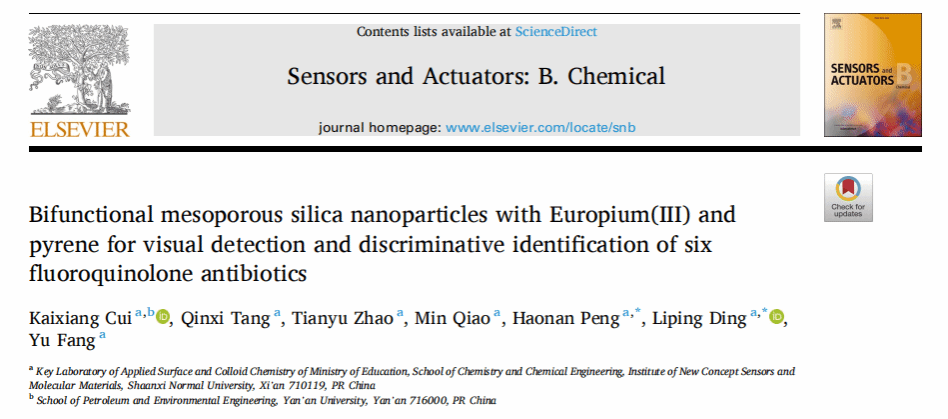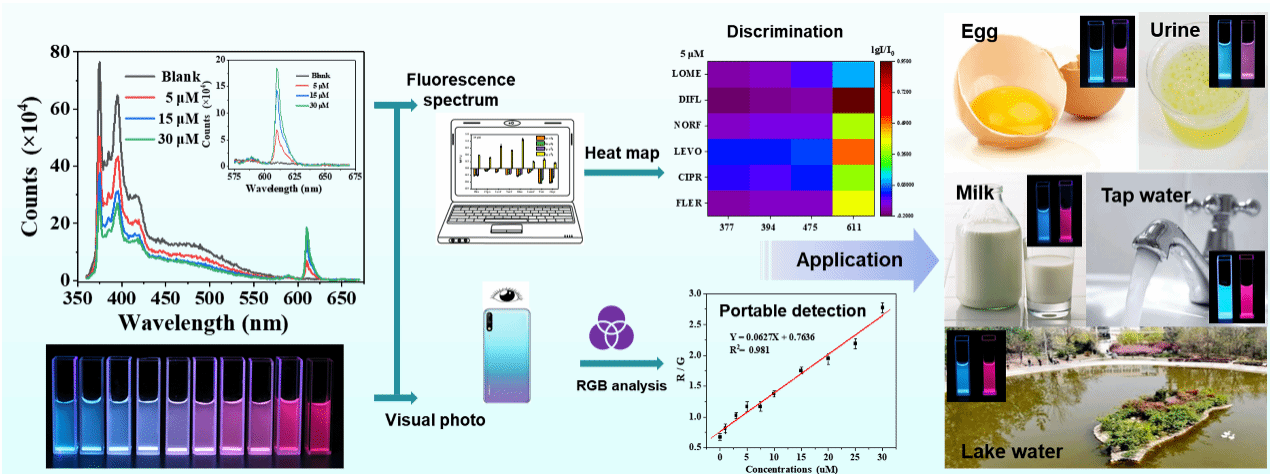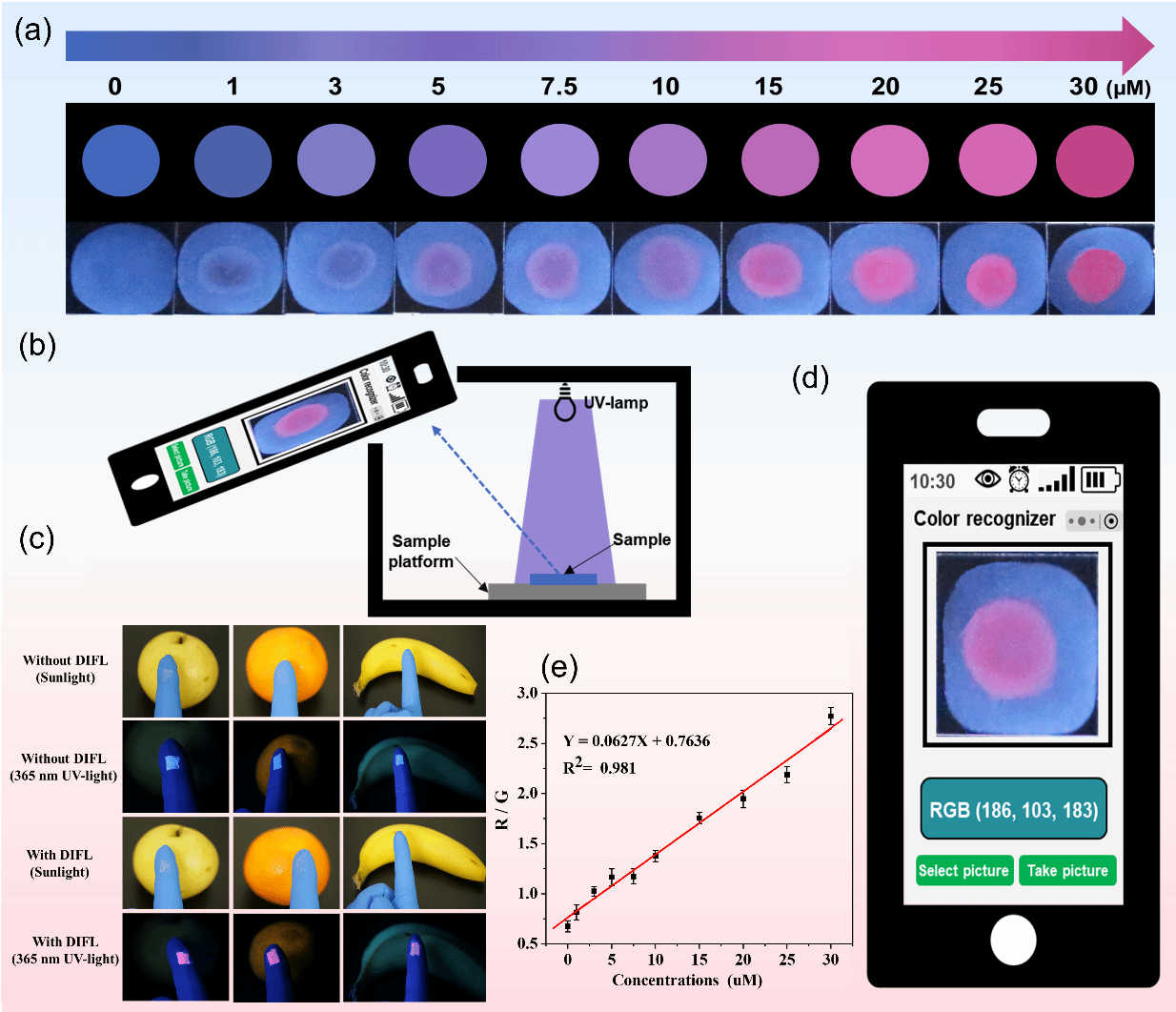
Kaixiang Cui, Qinxi Tang, Tianyu Zhao, Min Qiao, Haonan Peng*, Liping Ding*, Yu Fang. Sensors Actuators: B. Chemical, 2025, 427, 137162. DOI: 10.1016/j.snb.2024.137162.

Fluoroquinolones (FQs) are a widely used class of antibiotics that pose significant health and environmental risks due to their excessive and prolonged use. Due to the complexity of the FQs detection environment, the development of multi-signal proportional fluorescent probes has received extensive attention. The proportional fluorescence probe can avoid the influence of external factors better, and can effectively improve the accuracy and reliability of detection. However, there are relatively few studies on multi-signal proportional fluorescence probes for FQs antibiotics.
In general, proportional fluorescence probes based on organic molecules often require complex synthesis and purification processes. Although some inorganic fluorescent materials, including quantum dots and metal-organic covalent materials, have also been used to develop proportional fluorescent probes, the environmental health and biotoxicity risks associated with their widespread use must be carefully considered. Moreover, the above methods often require multiple systems to build sensor arrays to realize the identification of multiple antibiotics, which is not conducive to the rapid detection and identification of portable antibiotics. Mesoporous SiO2 nanoparticles (MSNs) have wide application potential in bioimaging, drug delivery, sensing and other fields due to their good biocompatibility and easy surface modification.

Figure 1. Flexible wearable nano-sensing film and application for rapid detection of FQs antibiotic residues
Based on the above knowledge, we propose an "All-in-One MSN" integration strategy, which integrates multiple sensing elements into MSNs with good biocompatibility and easy surface modification, and design a multi-wavelength proportional fluorescence nanoprobe Py@MSN-Eu. Py@MSN-Eu can provide multiple emission signals with interactive response, and the preparation is simple, and the identification of 6 FQs antibiotics with similar structure can be realized. In addition, a wearable flexible sensing film based on Py@MSN-Eu was developed, which is based on RGB recognition of smart phone, and can realize sensitive, intuitive and portable detection of FQs residues in food, environmental samples and body fluids.
In conclusion, our study introduces an innovative, sensitive, single-system fluorescent nanoprobe based discrimination sensor, highlighting its practicality and potential for practical environmental and food safety monitoring applications.
First Author: Cui Kaixiang, PhD candidate, Shaanxi Normal University
Correspondence Author: Prof. Ding Liping and Peng Haonan, Shaanxi Normal University
Full Text Link: https://pubs.acs.org/doi/10.1021/acsanm.4c01342